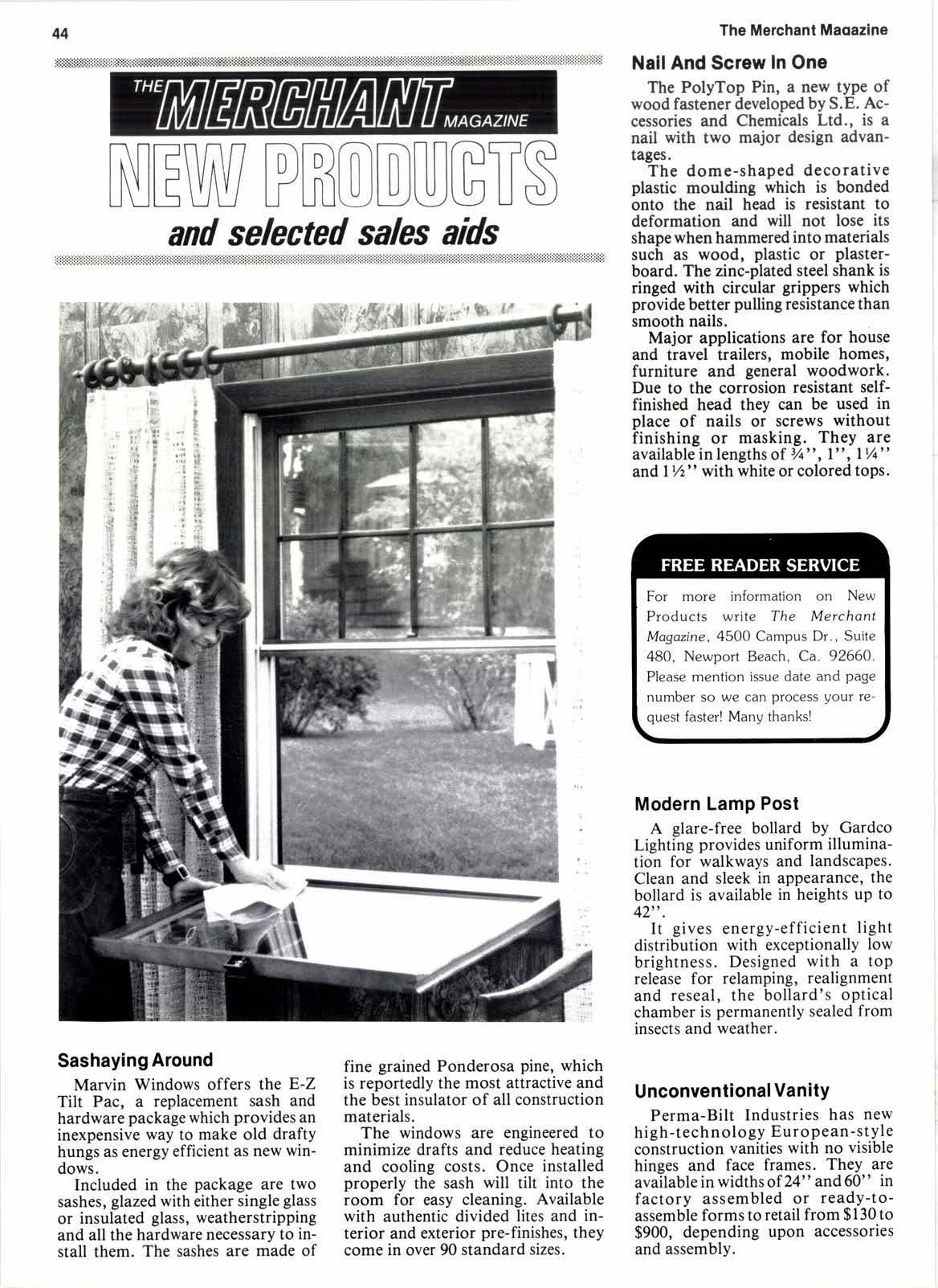
3 minute read
The Merchant Magazine's 60 year history mirrors a dynamic industry
aAONTINUITY in the lumber Ybusiness is one of the strengths of the industry. Ten, twenty, thirty, forty, fifty year anniversaries of companies are remarkably frequent in the back issues of The Merchant Mogazine. Equally impressive is the number of fathers, sons, and even grandsons, listed in the management of old time firms. This is not limited to the males-many wives have taken an active part in the family business and daughters, too.
Names and faces are not the only continuing thread. There is a pattern in the events which have shaped the lumber business: natural disasters, legislation, the economy, social trends.
Since The Merchant staff and visitors to our office always enjoy digging through back issues, it seems appropriate at this time to share a few of the highlights of the past 60 years with you, our readers.
The first edition in 1922 carried a long article about changes in railroad freight rates; current news of lumber standardization from the then commerce secretary, a fellow by the name of Herbert Hoover, still eight years away from being president; a full page ad for oak floors by the E.L. Bruce Co.; a hardwood ad promoting birch water tight flooring by the old W.E. Cooper Lumber Co. which became part of a Wickes division, Builders Emporium, much in today's news.
An article entitled "Home Building Stimulates Prosperity" sounds much like today's calls for interest rate aid to help housing pull out of the current trough; another story told of Hoo-Hoo's plan to have its own redwood grove, a project that took more than 50 years to realize.
A fellow by the name of Bob Osgood was mentioned as having come to Los Angeles to manage the branch of Wheeler-Osgood, Inc. of
Tacoma, Wa. One other lengthy story details the lumbermen's campaign against a referendum for the state's voters to decide yea or nay on wooden shingles.
The Western Hardwood Lumber Co. and National Hardwood Co. both of Los Angeles had ads in that first issue. H.W. Swafford of E.J. Stanton and Sons was noted as a Lumbermen's Club speaker, and another story tells of a "Finish Your Home in Hardwood" publicitycampaign by White Brothers of San Francisco.
Many of today's social issues are echoes of those earlier years. The first issue of The Merchant carried a request from Miss Alberta Ruth Brey, active vice president of The Brey-Wright Lumber Co., Porterville, Ca., for women to band together and form a national organization of women in the retail lumber business. Other women wrote to second her motion and another story stated "All over the Unjtpd States today you will find lumber women enjoying the work of selling homes and home improvement." Along that same line, an article on modern lumber merchandising urged having a special separate sales and service room for the women doing the building shopping.
Conservationists were rising with the Save-the-Redwoods League working to save the giant California redwoods from extinction and to make the "state highways veritable avenues of delight for tourists traveling through them." Companies including Lagoon Lumber Co. donated redwood timber adjacent to the highways to the cause.
Familiar names appearing in that era included The O'Malley Lumber Co. of Phoenix, Az., which had just purchased prop€rty in El Paso, Tx.; Frank Paramino, Paramino Lumber
Co., San Francisco, Ca., who traveled widely, described The Merchant as a "real lumber journal." LeRoy Stanton of E.J. Stanton & Son told Hoo-Hoo members that "Retailers ought to carry more hardwood lumber in stock."
A.L. "Gus" Hoover was mgr. of the Wendling-Nathan Co.'s Los Angeles, Ca., office; Long-Bell Lumber Co. began construction on new fir mills on the Columbia river near Kelso, Wa.; J.H. Baxter & Co.
Story at a Glance
The remarkable continuity of lhe Western lumberindustry is represented by many examples of names and companies active in the early'20s that are prominent today. purchased a streamer to transport creosoted piling from the Northwest.
Pacific Lumber Co. electrified its logging operations at Freshwater, Ca. The American Hardwood Co. marked its 8th year in business. The Johnson-Anawalt Lumber Co. added a planing mill to its Montrose, Ca., yard. Al Frost, San Diego Lumber Co. and the Frost Hardwood Co., San Diego, Ca., visited San Francisco.
Ernest F. Ganahl and Charles F. Grim bought the C. Ganahl Lumber Co., Anaheim, Ca. The Hammond Lumber Co., Los Angeles, was claimed as the largest retail lumber yard on earth with 27 acres, 15,000,(n0 ft. of softwood lumber, (Please turn to page 58)










